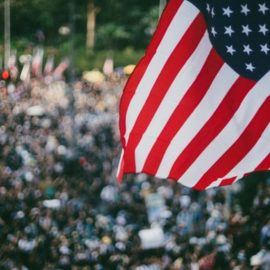

This article is an excerpt from the Shortform book guide to "I Am Malala" by Malala Yousafzai. Shortform has the world's best summaries and analyses of books you should be reading.
Like this article? Sign up for a free trial here.
How did a little girl from Pakistan become a Nobel laureate? Why did Malala leave Pakistan?
Nobel laureate Malala Yousafzai was only 10 years old when the Taliban arrived in her hometown in Pakistan. When Malala was 15, the Taliban shot and nearly killed her. I Am Malala, a New York Times best-seller, is Malala’s autobiography.
Continue reading for an overview of I Am Malala by Malala Yousafzai.
Overview of I Am Malala by Malala Yousafzai
As the Taliban’s attacks on women’s and girls’ freedoms rapidly escalated in her homeland of Pakistan, Malala took action, speaking out in support of girls’ right to education and against militant fundamentalism—even as she and her family faced death threats. She survived an attempt on her life and continues her activism to this day. Malala’s autobiography details her amazing story.
In our overview of I Am Malala by Malala Yousafzai, we’ll first examine the early influences that made Malala who she is, focusing on how her family—and, in particular, her father—was willing to defy tradition and fundamentalist religious views to raise her in an environment of compassion, gender equality, and secular education.
Next, we’ll explore how Malala and her father came of age against the backdrop of the Taliban’s rise to power. We’ll discuss the origins of the terrorist group and its takeover of the Swat Valley, where Malala lived with her family.Then, we’ll look at Malala’s campaign for girls’ education and against the Taliban, including her refusal to abide by the Taliban’s ban on girls’ education, her TV and radio speeches, her “Diary of a Pakistani Schoolgirl” blog for the BBC, and her participation in a New York Times documentary about the Taliban’s closure of girls’ schools. We’ll discuss her shooting at the hands of the Taliban—and her continued fight for girls’ education even after nearly losing her life.
Malala’s Family Valued Compassion, Gender Equality, and Education
How did a child born into poverty in a society that valued boys over girls and religious tradition over secular education become a Nobel-winning activist for girls’ education? We’ll examine the early influences that made Malala who she is, focusing on how her family was willing to defy tradition and fundamentalist religious views to raise her in an environment of compassion, gender equality, and secular education.
Malala Was Born Into Poverty in the Swat Valley of Pakistan
Malala was born in 1997 in the Swat Valley of Pakistan. Called the “Switzerland of the East,” it was a beautiful, mountainous region full of rivers and lakes. It attracted wealthy tourists from all over the world.
When Malala was young, her family was very poor. They lived in a two-room shack opposite the school her father, Ziauddin, had cofounded. They had no bathroom or kitchen. Malala’s mother, Toor Pekai, cooked over a fire on the ground. Later, they moved to a one-story concrete house.
Malala’s Pashtun Family Valued Hospitality and Compassion
Malala belongs to the Pashtun tribe. Pashtuns live in both Pakistan and Afghanistan—they inhabited the region long before the British drew the dividing line between the two countries.
Pashtuns’ most important values are honor and hospitality. Malala’s family also valued generosity and compassion toward the less fortunate. For example, Ziauddin let poor children enroll in his school free of charge. When the school eventually grew to 800 students, 100 of them were attending tuition-free. Malala’s mother let some of these children live with the family, and she fed breakfast to other students because she said it was hard for them to learn when they were hungry.
Like her parents, Malala was motivated by compassion for the poor. There was a huge trash heap down the street from her house because there was no garbage collection in Swat. When she saw some children there, collecting recyclable waste to sell, Malala begged her father to give the children free places at his school. He explained that they were probably the breadwinners for their families, so if they went to school, their families would go hungry. Instead, he started a local campaign arguing for the education of these poor children.
Malala learned an early lesson about compassion versus revenge from her parents. She had a toy cell phone that disappeared one day, and Malala thought her friend had stolen it. In retaliation, Malala began stealing her friend’s toys. When Malala’s mother found out, Malala initially lied and said she hadn’t done it, but then she confessed. She cried and apologized to her mother, who then took Malala to apologize to her friend. Malala never lied or stole again.
Afterward, her father consoled her by telling her stories of great leaders who had made mistakes. Malala learned that everyone makes mistakes; what matters is what you learn from them. This influenced her belief that the Pashtun emphasis on revenge was wrong. Instead of hurting someone who hurt you, as was the Pashtun practice, Malala believed you should teach them to do better.
Gender Roles in Malala’s Family and Pashtun Society
Malala’s family were traditional Pashtun Muslims in many ways, but when it came to gender roles, they frequently defied tradition. Pashtun marriages are usually arranged, but Malala’s parents married for love. Malala says that many Pashtun men physically abuse their wives, but Ziauddin cherished Toor Pekai and would never do such a thing. Ziauddin also talked his problems over with Toor Pekai and listened to her advice, even though in Pashtun society it’s seen as weak for men to share problems with women.
For Pashtuns, the birth of a girl is considered a disappointment, as they believe that women’s sole function is to prepare food and give birth. But when Malala was born, her father believed there was something unique about her. He asked people to throw dried fruits, sweets, and coins into her cradle, even though that was a Pashtun custom reserved for boys.
Malala was proud to be Pashtun, but she didn’t agree with some aspects of the Pashtun code of behavior, or Pashtunwali, especially in regard to women.
As a young girl, Malala played cricket in the streets and on the rooftops with her neighbor friends, but she knew that as soon as she got a little older she wouldn’t be so free. Pashtun women and older girls were expected to stay inside, cooking for and serving the men and boys in the family. Women and girls weren’t allowed to leave the home without a male relative. Malala’s mother and aunts had not been allowed to attend school; Toor Pekai couldn’t read or write. However, as Malala got older, her parents supported her not only in continuing her education, but also in speaking out publicly against the Taliban.
Malala’s family often went to stay with her father’s family in the mountain village where he grew up. There, women couldn’t leave the house without covering their faces, and they weren’t allowed to speak with men unless they were close relatives. Malala did not cover her face in the village, even when she became a teenager. The people in the village criticized her, but her father defended her.
The Value of Education in Malala’s Family
Malala’s family had a long tradition of valuing secular education. Her grandfather taught theology in a government high school and was an imam at the local mosque. He sent Ziauddin to the government school, rather than the religious madrasa, even though people criticized him for this because he was a religious leader himself. Malala’s grandfather was also an avid reader and cared about the rights of the poor and disadvantaged, values he passed on to his son.
Malala’s father dreamed of starting his own school, but his family was poor and had no connections. He nonetheless managed to attend a good university and, although he encountered many setbacks, he eventually founded a school. Over time, the school grew and expanded to three locations. Ziauddin became known in the community for his willingness to speak up and criticize the government and the army.
Malala grew up in her father’s school, sitting in on classes and admiring the teachers. When she started attending school herself, she loved it. She had an ongoing rivalry with her best friend over who would get the top marks in their class, and Malala almost always won.
Malala and Her Father Came of Age During the Taliban’s Rise to Power
While Malala’s identity was influenced by her family’s positive values, both she and her father were also shaped by the rise of the Taliban during their lifetimes. We’ll first discuss Malala’s perspective on the origins of the Taliban in the 1980s and 1990s. Then, we’ll examine the terrorist group’s increasing power in the Swat Valley after the 9/11 terrorist attacks.
The Origins of the Taliban in Pakistan
Malala explains that during her and her family’s lifetimes, Pakistan has been ruled by a series of military dictators who maintained control in part by emphasizing the people’s religious duty to obey the government. We’ll examine how the actions of these dictators laid the groundwork for the rise of the Taliban. Next, we’ll look at why Malala’s own father almost joined the Taliban as a teenager.
Pakistani Dictators and the Creation of the Taliban
In 1977, when Malala’s father was eight, there was a military coup in Pakistan and a general named Muhammad Zia ul-Haq seized control from the elected prime minister. General Zia tried to win the support of the Pakistani people by campaigning to make Pakistan a strict Muslim country and arguing that it was the people’s religious duty to obey his government. Many madrasas were opened during his rule, and Islamic studies became a required class in secular schools. Zia also enacted many laws curtailing women’s rights.
Then, the Soviet Union invaded Pakistan’s neighbor, Afghanistan, in 1979. Millions of Afghans fled to Pakistan; General Zia accepted them as refugees and began a program to train them as mujahideen, or resistance fighters. These mujahideen eventually became the Taliban.
Malala writes that in training these fighters, Zia gained favor with the US, for whom the Soviet Union was the primary enemy in the Cold War. Western countries sent billions of dollars and weapons to help Pakistan’s military intelligence service, ISI, train men to fight the Soviet Union’s Communist army. Zia also gained favor with the Arab world, which saw the Soviet invasion of Afghanistan as an attack by infidels on a fellow Muslim country.
Clerics in the mosques began to preach about the Soviet invasion, saying it was the Pakistani people’s duty as Muslims to join the jihad against the Soviet infidels.
On September 11, 2001, the terrorist attacks in the US happened. The leader of the al-Qaeda terrorist organization, Osama bin Laden, was living in Kandahar, Afghanistan at the time. America sent thousands of troops to Afghanistan to catch him and overthrow the Taliban regime that had protected him. Just as America had needed Pakistan’s help to fight the Soviets in Afghanistan, it also needed Pakistan’s help to fight the Taliban in Afghanistan. As a result, America embraced General Pervez Musharraf, who was Pakistan’s president at the time and who agreed to help the US with its “War on Terror.”
Malala writes that because Pakistan’s intelligence service, ISI, had essentially created the Taliban, many ISI officers were close to Taliban leaders. So even as Pakistan assisted the Americans, they were still providing weapons to Taliban fighters and sheltering their leaders in Pakistan.
In 2004, the Americans launched a drone attack in a region of Pakistan where they believed Osama bin Laden was hiding. They followed that attack with two more, killing over 100 Pakistanis. As a result of these attacks and Pakistan’s support for the US War on Terror, militancy and anti-government sentiment began to grow within Pakistan. This eventually contributed to the emergence of the Pakistani Taliban.
Conditions That Contributed to Radicalization: The Example of Malala’s Father
Although Malala’s father eventually became an outspoken critic of the Taliban and a founder of secular schools, his experience as a teenager demonstrates how young men in Pakistan could become susceptible to radicalization.
Malala recounts how Ziauddin grew up in a poor village with few opportunities. Although he attended a secular school, he also studied the Quran with a religious scholar when he was a teenager. His teacher constantly talked about jihad, saying it was the right choice because life on earth was short, and there were few work opportunities in the village. Ziauddin was influenced by his teacher and was afraid of working in the dangerous coal mines like many of the men in his village, so he decided he wanted to become a jihadi. Ziauddin later told Malala that he believed he was subjected to a type of brainwashing.
Some of the boys from Ziauddin’s district were recruited to wage holy war against the Soviets alongside the Taliban in Afghanistan. Years later, the same organization that recruited them became the Swat Taliban.
One of the things that changed Ziauddin’s mind about becoming a jihadi was spending time with his future wife’s family. They belonged to secular nationalist parties and were opposed to Pakistan’s involvement in the Afghan war.
The Taliban Attacked Girls’ Education and Women’s Freedoms in Malala’s Province
After 9/11, the Taliban and militant fundamentalists associated with them increasingly attempted to curtail women’s and girls’ freedoms in Malala’s province. The process began slowly, with various fundamentalist groups spreading their belief that Islamic law prohibits women’s freedoms. Then, in 2007, the Taliban entered the Swat Valley, and the violence and threats escalated—including the Taliban’s first threat against Malala’s family.
Precursors to the Taliban in the Swat Valley
In 2002, the MMA Alliance won the elections in Malala’s province. They were a group of five religious parties, including the one that had run the madrasas where the Taliban were trained. The MMA tore down billboards featuring pictures of women or covered the images with black paint. They took female mannequins from clothing shops and insisted women wear head coverings.
Malala’s father opened his high school in 2003; at the time, boys and girls were in the same classes. But, by the following year, the atmosphere in the province had changed so much that having co-ed classes was no longer an option.
In 2005, a massive 7.6 earthquake hit Pakistan, killing over 73,000 people. The Movement for the Enforcement of Islamic Law, or TNSM—a group that had sent men to fight alongside the Taliban in Afghanistan and was now led by Maulana Fazlullah—provided some aid to remote villages that the government hadn’t been able to help.
Taking advantage of the atmosphere of fear created by the earthquake, mullahs (religious leaders) from the TNSM preached that the earthquake was a punishment from God for women’s freedoms and obscenity. The mullahs warned that if people did not adopt sharia, or Islamic law, God would send more severe punishments.
The Taliban’s Imposition of Increasingly Harsh Sharia Law in the Swat Valley
Malala was 10 when the Taliban came to the Swat Valley, seemingly appearing out of nowhere. The Taliban fighters were armed with knives and Kalashnikovs (assault rifles) and wore black badges that said “Sharia law or martyrdom.”
Their leader was 28-year-old Fazlullah. He set up a radio station in the Swat Valley known as Mullah FM, and people called him the Radio Mullah. Many people in Swat got all of their information from the radio because they didn’t have a TV or were illiterate.
Soon, says Malala, the Radio Mullah began telling people to stop listening to music, watching movies, and dancing—activities that he said were sinful and had caused the earthquake. Malala asked her father if the Quran really prohibited those things, and Ziauddin told her that the Radio Mullah was making it up.
However, many people were fed up with the slow-moving and corrupt Pakistani justice system, so they agreed with Fazlullah’s ideas about bringing back Islamic law. Six months after Mullah FM began broadcasting, people started heeding Fazlullah’s admonishments to get rid of their TVs, CDs, and DVDs. The Taliban gathered the electronics in huge piles and burned them in the streets. Malala’s family hid their TV in a cupboard and watched it on low volume.
Fazlullah often preached directly to women, instructing them to stay home and go outside only in emergencies. Malala was confused by this because she knew that the Quran did not say that women should stay home and only men could go out. But even Malala’s mother believed that the Quran prohibited women from leaving the home without a male relative.
Soon, the Radio Mullah was preaching that girls should not go to school. On his radio program, he named girls who had quit school and congratulated them, saying they’d go to heaven. He also told women not to go shopping at the bazaar. If they did try to go, the Taliban would shout at and intimidate them until they went home.
Then Fazlullah began holding local “courts” called shura to resolve disputes. The shura instituted public whippings as punishments. Fazlullah set up a stage where people were flogged in front of cheering crowds. Next, he established a morality police who patrolled the streets in pickup trucks, wielding machine guns.
One day, when Malala and her family were passing through a Taliban checkpoint, Taliban soldiers carrying Kalashnikovs told Malala and her mother that their failure to wear Burqas was shameful. When the family returned home, they found a note from the Taliban on the gates of Ziauddin’s school. It threatened severe punishment unless the school stopped teaching girls.
While all this was happening, the authorities and the people did nothing to stop it. Malala’s father said that people had been seduced by Fazlullah.
However, clashes between the Taliban and the Pakistani government in Islamabad (the capital of Pakistan) led Musharraf to send the army into the Swat Valley. This was the beginning of a conflict between the army and the Swat Taliban that would last for years.
It was hard for Malala to sleep at night because of all the noise from the machine guns and cannons. The army succeeded in driving Fazlullah and his fighters into the mountains, but within a week, 40 Taliban leaders from across Malala’s province met to form a united front. They called themselves the TTP, or Pakistan Taliban. Besides fighting government forces, they also acted as a morality police, targeting women who weren’t observing purdah.
Benazir Bhutto, a former prime minister who had recently returned from exile, gave a speech in which she condemned the militants. Immediately after the speech, she was assassinated. Many Pakistanis, including Malala, felt that their hope for democracy and women’s rights in the country died along with her.
Malala Campaigned for Girls’ Education and Against the Taliban
Surrounded by the Taliban’s increasing violence and attacks on women and girls, Malala did what she believed was right: She continued going to school despite the Taliban’s ban and, encouraged by her father, she spoke out in support of girls’ education.
We’ll look at Malala’s campaign for girls’ education in the face of serious risks, including the Taliban’s bombings and closures of schools, the evacuation of the Swat Valley due to fighting between the army and the Taliban, and the continued death threats against Malala and her father. We’ll discuss Malala’s shooting at the hands of the Taliban. Finally, we’ll explore how she survived and continued her fight for girls’ education from her new home in England.
Malala Spoke Out in Support of Girls’ Education and Against the Taliban
Malala continued going to school despite the Taliban’s prohibition on girls’ education. She hid her book bag on the way there and back and didn’t wear her uniform to avoid detection by the Taliban.
The fighting continued in the Swat Valley in 2007 and 2008. Fazlullah started blowing up schools, usually after the night curfew when no one was in them. There were school bombings almost every day. One of them killed 10 members of Malala’s best friend’s family. By the end of 2008, the Taliban had destroyed over 400 schools.
Some of the Pashtun elders in Swat, including Ziauddin, banded together to challenge Fazlullah. They spoke out against the Taliban by giving interviews on radio programs like Voice of America and the BBC. Malala’s father encouraged her to speak up, and she began giving interviews as well.
She started when she was 11 by doing group interviews with her classmates, in which they spoke about girls dropping out of school because of the Taliban. But, when her classmates reached 13 and 14, the men in their families didn’t want them to give interviews anymore because they were afraid the Taliban would punish them for not observing purdah after puberty. Malala had the support of her father and believed it was important to speak the truth, so she continued. She believed God would protect her because she was doing what was right.
Ziauddin’s friend, a BBC radio correspondent, called him looking for a female teacher or student to write a weekly diary about life under the Taliban. Malala volunteered to do it. They had a computer, but there were frequent power cuts and little internet access, so the correspondent interviewed Malala over the phone and wrote up her thoughts. She used a pseudonym—Gul Makai—and couldn’t tell anyone she was writing the diary because it was too dangerous. The diary garnered international attention. Malala began to see the power of the written word.
At the end of 2008, the Taliban announced that all girls’ schools must shut down by January 15. On the day Malala’s school shut down, she and her classmates stayed late playing, and then she went home and cried. After that, she did as many TV and radio interviews as she could. She said that the Taliban could close the schools, but they couldn’t stop girls from learning. However, she feared it would be very hard to learn, much less get a job, without school.
After the Taliban banned girls’ education, Pakistanis spoke out in a way they hadn’t before. The Taliban agreed to lift the ban for girls up to 10 years old. Malala was 11, but she and others her age pretended they were younger so they could start going to school again.
Malala’s Family Fled the Swat Valley
Finally, the Pakistani Army launched a more intensive effort to drive the Taliban out of Swat. The government told people to evacuate. Malala’s family tried to stay, but the fighting left them constantly anxious. They left the Swat Valley along with almost two million Internally Displaced Persons (IDPs).
Malala and her family were away from their home for about three months. When they returned, they found buildings in ruins, piles of wreckage, and walls covered with bullet holes. The Taliban was no longer in charge, but Malala feared that they could return at any minute; she had nightmares about it.
Life began to regain a semblance of normalcy. But, just when people started to think the Taliban was really gone, there was a series of bombings, kidnappings, and murders. Ziauddin continued to speak out against the Taliban, and he received another death threat.
Malala’s Profile Continued to Rise
Meanwhile, Malala received many awards for speaking out for girls’ education, and she continued to give interviews to TV and print journalists. During one speech at a gala, she spoke publicly for the first time about defying the Taliban’s orders and going to school in secret.
Malala’s rising profile attracted attention, and she received a death threat from the Taliban. Although her parents were worried and encouraged her to pause her work, Malala wanted to keep speaking out. She reassured herself with the thought that the Taliban had never targeted a young girl. She was more worried about her father than herself.
Nonetheless, Malala started having nightmares about the Taliban shooting her or throwing acid in her face. At night after everyone was asleep she double-checked that every door and window in the house was locked and prayed that her family and all of Swat would be protected from the Taliban.
Malala Was Shot by the Taliban
By the time Malala was 15, she had been speaking out against the Taliban, at increasingly greater personal risk, for four years. She and her family had been receiving threats from the Taliban for a year.
On October 9, 2012, the Taliban shot Malala. At the time, she and her friends were going to school in secret. There was no longer a sign over the door to the school, and the students arrived by bus, even though the school was only a short walk from their homes, because it wasn’t safe to walk.
Malala was riding the bus home from school with 19 other girls when Taliban soldiers pulled them over. A man asked for her by name, then shot her in the face point-blank. The bullet went through her left eye socket, exited her head, and lodged in her shoulder, narrowly missing her brain. The Taliban later claimed responsibility for shooting Malala. They said they had done it, not because of her fight for girls’ education, but because she supported Western, secular ideas.
Malala was rushed to a series of hospitals, where doctors operated on her to remove the bullet and relieve life-threatening swelling in her brain. She suffered complications after the operations and was transferred to a hospital in Birmingham, England.
Malala’s family had trouble getting out of Pakistan to join her, so for her first 10 days at the English hospital, she was alone. When she regained consciousness in Birmingham, she had no idea what had happened, where she was, or why her vision and hearing on her left side weren’t working and her thoughts were muddled. She couldn’t speak, so she wrote basic phrases in English on a notepad. She couldn’t walk properly. Slowly, she regained her speech and practiced walking.
When Malala was reunited with her family, everyone released the emotions they had been holding in and cried. Malala’s family was distraught to see that the left side of her face was paralyzed, and she couldn’t smile. Doctors operated to repair Malala’s damaged facial nerve; after three months, movement slowly began returning to her face.
Malala Continued Her Fight for Girls’ Education From Her New Home in England
The Pakistani government rented an apartment in Birmingham for Malala’s family to stay in while she recovered. They paid for her medical care and gave her father a position as education attaché to the Pakistan high commissioner in London.
Six months after the attack, Malala was well enough to start school in Birmingham. Malala liked England, but she missed home. She couldn’t return, however, because it was still dangerous for girls to get an education in Pakistan. Schools were still being bombed and girls killed.
On Malala’s 16th birthday, she gave a speech about girls’ education at the UN in New York. She wrote the speech, not just for the UN delegates, but for people all over the world whom she hoped to inspire.
She also founded the Malala Fund, which works to ensure that girls around the world receive an education. She went to Kenya to build a school and to Nigeria to show solidarity with schoolgirls abducted by militants. She went to the White House to discuss girls’ education with US President Barack Obama. She told the president that instead of trying to root out terrorism through war, the US should work to eliminate terrorism through education.

———End of Preview———
Like what you just read? Read the rest of the world's best book summary and analysis of Malala Yousafzai's "I Am Malala" at Shortform.
Here's what you'll find in our full I Am Malala summary:
- Malala Yousafzai's autobiography about growing up in a society where women lack rights
- A look at Yousafzai's origins in poverty to her campaign for girls’ education
- How she survived getting shot at point-blank by the Taliban






